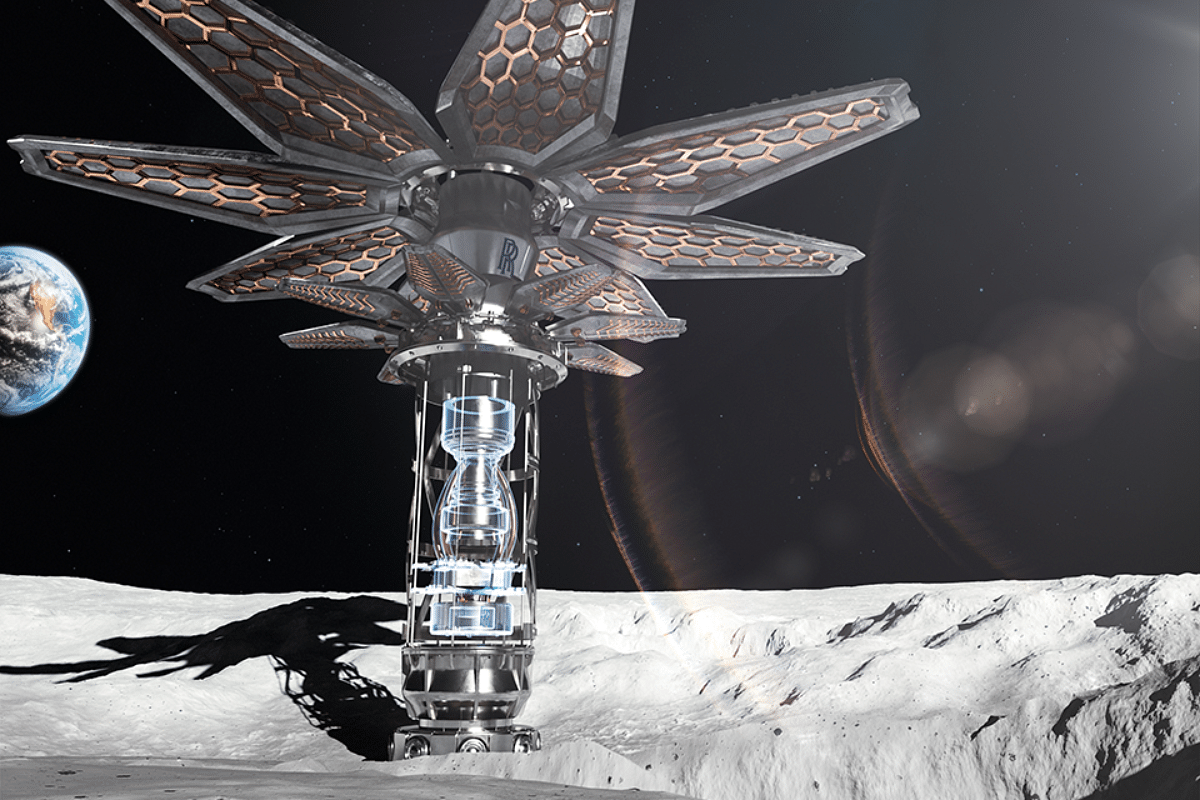Science
Backed By UK Space Agency, Rolls-Royce Is Developing A Nuclear Reactor To Power Human Base On The Moon
- Rolls-Royce plans to have a reactor, about the size of a car, ready to send to the Moon by 2029.
- They recently secured new funding from the UK Space Agency for this ambitious project.

Rolls-Royce has secured funding from the UK Space Agency to develop a nuclear reactor for the Moon. (Image: Rolls-Royce)
The United Kingdom (UK) Space Agency is funding British industry giant Rolls-Royce’s research exploring the use of nuclear power to support a future Moon base for astronauts.
Scientists and engineers at Rolls-Royce are developing a micro-reactor that can someday act as a power source for humans living and working on the Moon.
“Nuclear power has the potential to dramatically increase the duration of future Lunar missions and their scientific value,” Rolls-Royce has said.
In 2022, the UK Space Agency gave Rolls Royce 249,000 pounds for a study on the use of nuclear power on the Moon. Now, it has announced new funding of 2.9 million pounds with the goal of realising an initial demonstration of a UK lunar modular nuclear reactor.
Rolls-Royce plans to have a reactor, about the size of a car, ready to send to the Moon by 2029.
“Relatively small and lightweight compared to other power systems, a nuclear micro-reactor could enable continuous power regardless of location, available sunlight, and other environmental conditions,” Rolls-Royce has said.
“During sunlight hours, and when you’ve got the Sun, you can use solar, but if you want to explore the dark side of the Moon and go around the other side, actually you’re going to need something else (to power living and working on the Moon), so the nuclear power allows you to do that,” Abi Clayton, the Director of Future Programmes for Rolls-Royce Submarines, explains in a video.
Humans on the surface of the Moon would experience 327.5 hours of sunlight and 327.5 hours of darkness. That’s a long time — close to two weeks — to be spending in the darkness while relying only on solar power. It makes the case for alternative power sources, such as nuclear, to be used on the Moon.
By collaborating with the Universities of Oxford, Bangor, and Loughborough, the University of Sheffield’s Advanced Manufacturing Research Centre (AMRC), and Nuclear AMRC, among others, Rolls-Royce intends to use the UK Space Agency funding to strengthen their knowledge of these complex systems they are now developing.
Further, they plan to focus on three key features of the micro-reactor: the fuel used to generate heat, the method of heat transfer, and technology to convert that heat into electricity.
If they get it right, Rolls-Royce’s nuclear reactor could find commercial and defence applications alongside its use in space, since the micro-reactor can be used similarly on Earth as in space, to provide off-grid power effectively.
It was announced only over a week ago that Rolls-Royce Submarines Limited would provide reactors for Australia’s nuclear-powered submarines, as part of the AUKUS trilateral agreement between Australia, the UK, and the US. This would be an example of a terrestrial use.
As for matters of space, humanity is planning to return to the Moon after over 50 years since their last visit there.
The National Aeronautics and Space Administration (NASA) executed nine human spaceflight missions to the Moon between 1968 and 1972, allowing 11 humans to successfully step foot on the lunar surface across six missions.
Now, the American space agency is preparing to head back, on the back of its long-haul Artemis programme.
Artemis is a NASA-led international programme leading the return of humans to the Moon, this time for “long-term exploration and utilisation” and as a stepping stone for the next giant leap, Mars.
NASA says everything they would need to do on Mars someday would first need to be done on the Moon.
Therefore, through Artemis, NASA aims to land the first woman and the first person of colour on the Moon, paving the way for a long-term, sustainable human presence and, as a result, unprecedented exploration of Earth's natural satellite.
Sustained human presence on the Moon, however, will require many essential ingredients, one of which is power. Rolls-Royce is, thus, working on an innovative power source that will keep a lunar base going, hopefully for longer than is currently thought possible.
The UK Space Agency also recently announced 51 million pounds of funding available for British companies to develop communication and navigation services for Moon missions.
This work is part of the European Space Agency’s Moonlight programme, which aims to launch a constellation of satellites into orbit around the Moon, from 2028.
Independent research suggests more than 250 missions to the Moon are due to launch over the next decade alone, says the UK Space Agency, which might generate nearly 90 billion pounds in global economic returns and thousands of new jobs.
Introducing ElectionsHQ + 50 Ground Reports Project
The 2024 elections might seem easy to guess, but there are some important questions that shouldn't be missed.
Do freebies still sway voters? Do people prioritise infrastructure when voting? How will Punjab vote?
The answers to these questions provide great insights into where we, as a country, are headed in the years to come.
Swarajya is starting a project with an aim to do 50 solid ground stories and a smart commentary service on WhatsApp, a one-of-a-kind. We'd love your support during this election season.
Click below to contribute.
Latest